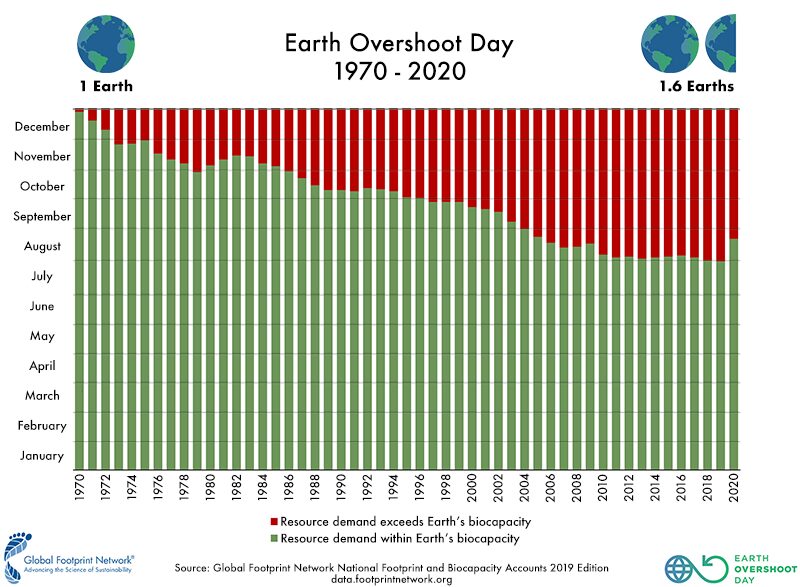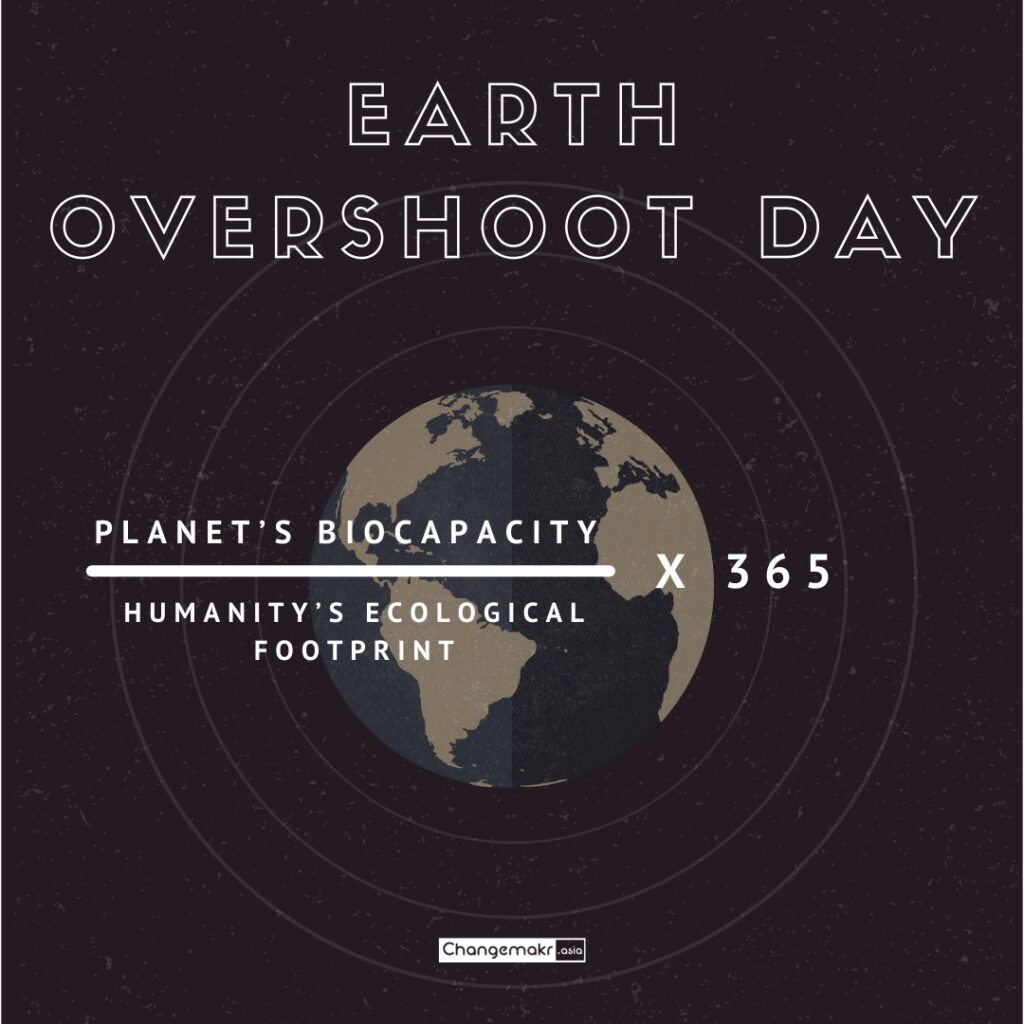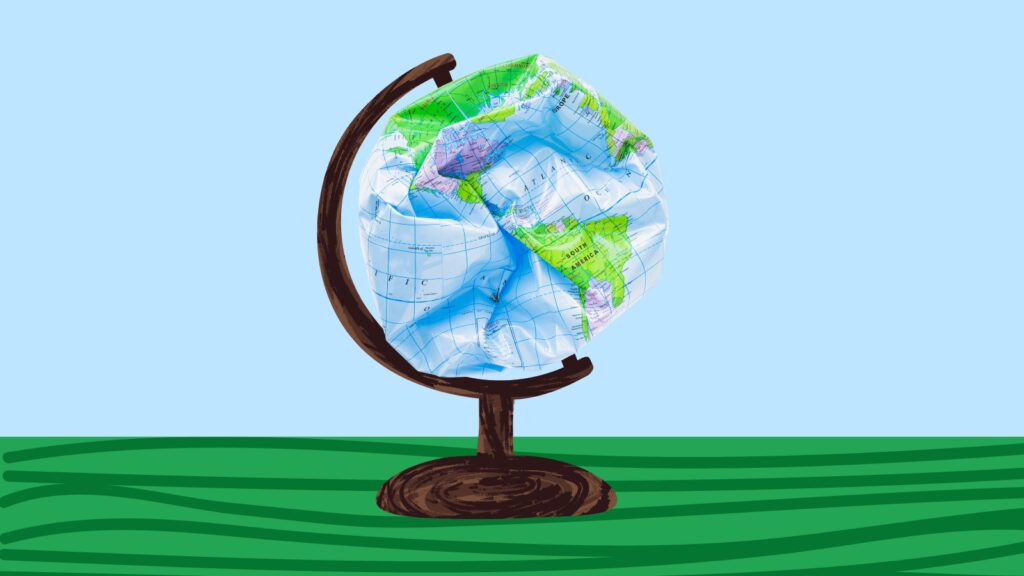Thursday, 29 July marks the Earth Overshoot Day 2021. This means humans have used up more natural resources than the planet can renew in the entire year.
EARTH OVERSHOOT DAY 2021
Earth Overshoot Day marks the date when humanity’s demand for ecological resources and services in a given year exceeds what Earth can regenerate in that year (source : overshootday.org). This means that between January 1st, 2021 and July 29th, humanity will have demanded an amount equivalent to what the planet can regenerate over the whole calendar year, given best available data. Each year, Earth Overshoot Day is moving to an earlier date.

What Does this means ?
This means that we are now living on credit until the end of the year, spending natural resources much faster than the earth can produce them.
RELEVANT SUSTAINABLE GOALS

EARTH OVERSHOOT DAY CALCULATION
Earth Overshoot Day is hosted and calculated by Global Footprint Network, an international research organization that provides decision-makers with a menu of tools to help the human economy operate within Earth’s ecological limits. The concept of Earth Overshoot Day was first conceived by Andrew Simms of the UK think tank New Economics Foundation, which partnered with Global Footprint Network in 2006 to launch the first global Earth Overshoot Day campaign. WWF, the world’s largest conservation organization, has participated in Earth Overshoot Day since 2007.
To determine the date of Earth Overshoot Day for each year, Global Footprint Network calculates the number of days of that year that Earth’s bio-capacity suffices to provide for humanity’s Ecological Footprint. The remainder of the year corresponds to global overshoot.
Earth Overshoot Day is computed by dividing the planet’s bio-capacity (the amount of ecological resources Earth is able to generate that year), by humanity’s Ecological Footprint (humanity’s demand for that year), and multiplying by 365, the number of days in a year:

MEASURING ECOLOGICAL WEALTH
Similar to a bank statement tracks income against expenditures, Global Footprint Network measures a population’s demand for and ecosystems’ supply of resources and services. These calculations then serve as the foundation for calculating Earth Overshoot Day.
On the supply side, a city, state, or nation’s biocapacity represents its biologically productive land and sea area, including forest lands, grazing lands, cropland, fishing grounds, and built-up land.
On the demand side, the ecological footprint measures a population’s demand for plant-based food and fibre products, livestock and fish products, timber and other forest products, space for urban infrastructure, and forest to absorb its carbon dioxide emissions from fossil fuels.
Both measures are expressed in global hectares—globally comparable, standardized hectares with world average productivity. A hectare is equivalent to 10,000 square meters or 2.47 acres.
Each city, state or nation’s Ecological Footprint can be compared to its biocapacity. If a population’s demand for ecological assets exceeds the supply, that region runs an ecological deficit. A region in ecological deficit meets demand by importing, liquidating its own ecological assets (such as overfishing), and/or emitting carbon dioxide into the atmosphere.
At the global level, ecological deficit and overshoot are the same, since there is no net import of resources to the planet.
You can also find out your Country’s Overshoot Day here
SOLUTIONS : #CONTRIBUTE TO #MOVETHEDATE
Wondering how you can help #MoveTheDate of Earth Overshoot Day?While it can feel overwhelming to contribute to #movethedate and global overshoots, here are some steps you can explore to help #movethedate of Earth Overshoot Day and create a sustainable future !
Find more information about Earth Overshoot Day on the website https://www.overshootday.org/
Share what your doing to help on social media using #MovetheDate



